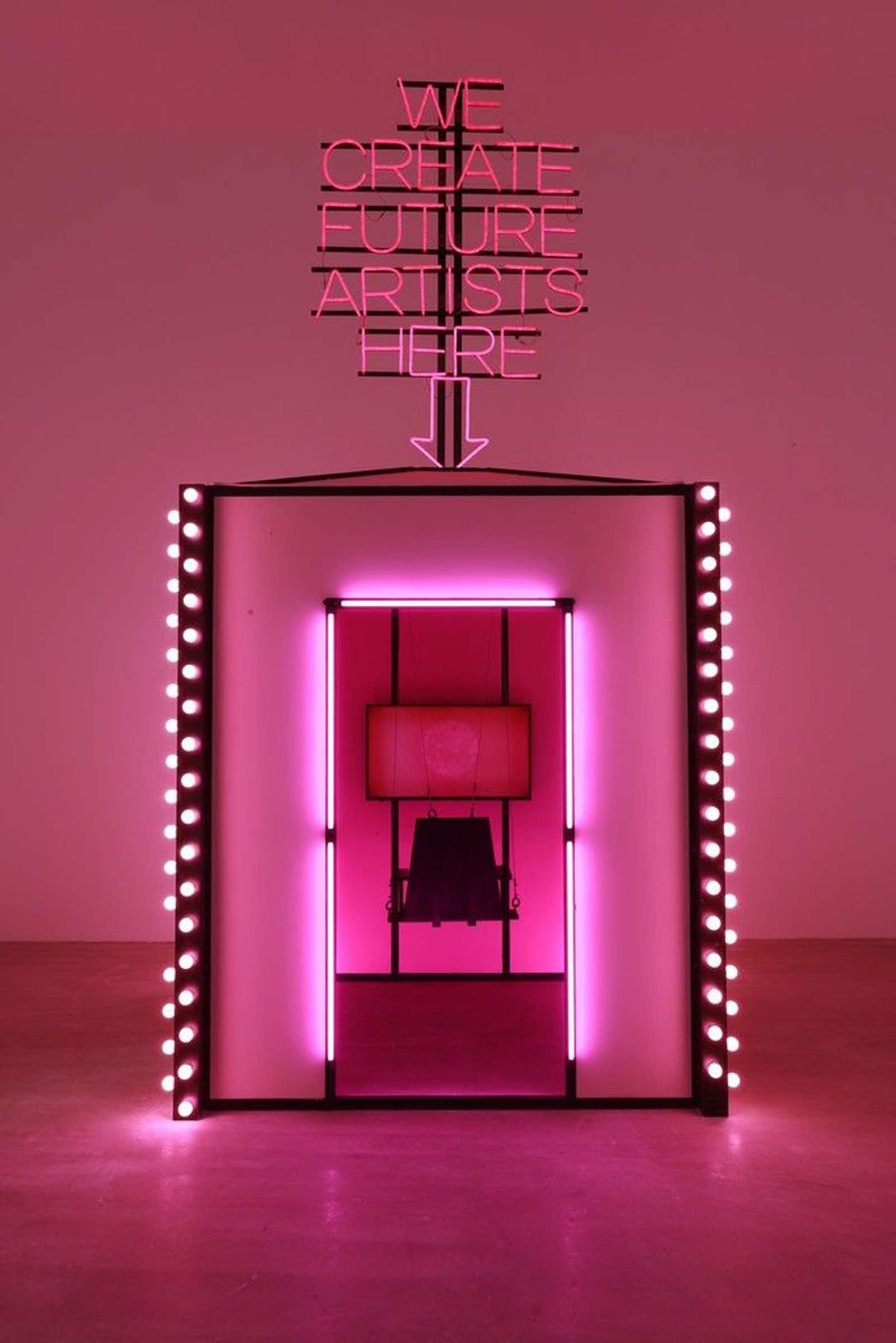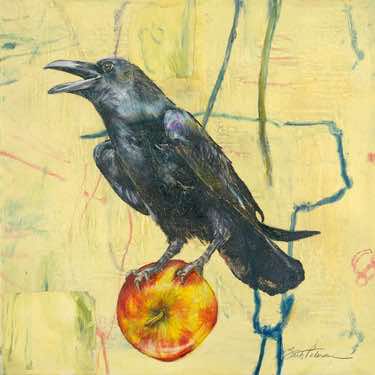“The system is rigged!” So goes the bitter lament of the unrepresented artist. For those struggling to break in, the machinations of art galleries and dealers can seem unfair. It’s easy to imagine a cabal of insiders, an Illuminati of the anointed, who all went to the same posh private schools and summer in the Hamptons together. They must conspire together to prop up their untalented friends; they are doubtlessly curating ex-boyfriends into important biennials, schmoozing their way into undeserved residencies. Faced with the daunting challenge of being seen, the unrepresented artist can be forgiven for her despair. After all, she’s got a flashy website, and she’s emailed it to all the major dealers, with nary a polite form response in return!
The way small and mid-size galleries develop relationships with new talent isn’t nearly as mysterious as it seems. “Artists who build communities, artists who have a tremendous amount of outreach with other artists, seem to get in front of dealers,” said Andrew Freiser of Fredericks & Freiser in New York. This might not always translate into representation, but it does lead to that most important commodity: visibility. And while it might seem like confirmation of the scorned artist’s belief—that the art world is a sham where the only thing that matters is who you know—that would be a misreading of reality.
It’s a family affair
Freiser and several other dealers stressed the importance of a robust, creative social network whose members strive to support and elevate one another. “It’s not necessarily who you know in a hierarchical sense,” he added, “it’s who you know of your peers.” In other words, success doesn’t have to mean hobnobbing with Whitney Museum curators and Artforum editors (though that certainly can’t hurt)—it can simply mean developing an artistic family of friends and acquaintances whose work resonates.
That type of informal network is the primary avenue through which dealers I spoke with discover new artists. This is not a new phenomenon: A recent study confirmed the historical importance of such relationships. As Artsy’s Casey Lesser noted, the research bore out how “artists with a large and diverse network of contacts were most likely to be famous, regardless of how creative their art was.” Again, it’s admittedly easy to throw up one’s hands and conclude that talent matters far less than networking. But from a less cynical point of view, the process of how dealers learn about new artists is actually very intuitive, and more straightforward than you might imagine. “It’s sort of like how you discovered music as a kid,” Freiser said. “A friend would mention a band, maybe you heard a song, you’d go seek out the album. It’s much more organic.”
Freiser broke down a few ways in which he began representing certain artists. For instance, he had shown the work of Ross Simonini in a two-person exhibition. Simonini is an editor for The Believer magazine, and the publication later asked artist and comics legend Gary Panter who his dream interview would be. Panter chose John Wesley, who is on Fredericks & Freiser’s roster; that interview process led to a relationship with the gallery, which now represents Panter. In another instance, the gallery began working with the painter Justin Craun after he was recommended by his art-school teacher Marilyn Minter. The connections didn’t come about through social maneuvering—they happened naturally. “You meet artists like you meet anyone else,” Freiser said.
Show up for shows
“The crux of it is: Community is key,” said Davida Nemeroff, an artist and the founder of Night Gallery in Los Angeles. “Most of the artists we show are part of our community in one way or another. Some were classmates at Columbia in the MFA program; some are artists living and working in L.A., so I’ve seen their work exhibited before reaching out for a visit. Or they’ve been coming to the gallery for many years, and it’s about time I understand what they do.”
That latter point was echoed by every dealer I spoke with. It’s not enough to build a crew of like-minded artists willing to talk up each other’s brilliance; dealers are also on the lookout for those who are honestly engaged with their programming. “I find it incredibly perplexing,” Nemeroff added, “that people who don’t come to the gallery reach out to me and ask for representation, or studio visits.”
To be clear, “coming to the gallery” doesn’t mean stopping by with the goal of self-promotion. Dealers notice artists who attend their shows, ask questions, and sign the guestbook, because it proves they’re genuinely engaged with what the gallery is doing. None of the dealers I spoke with expressed any fondness for pushy artists proffering portfolios or iPads. Despite the low odds of success, Freiser said it’s something artists still do all the time—even in the high-pressure commercial setting of art fairs. “It’s a complete lack of social understanding of how things progress,” he said.
Artists who really want to get noticed have to remember that galleries are businesses, too. Dealers will certainly notice anyone who supports their program by actually acquiring work they love. “One current gallery artist would come in as a young undergraduate student and buy work from me,” recalled Scott Speh of Chicago’s Western Exhibitions. “Nothing super expensive—small drawings and prints—but it definitely got my attention.…I’ve done three shows with this person since he graduated! I know this isn’t feasible for most art students, but buying art (or a catalogue, or a ’zine) from a gallery is one way to get recognized.”
No representation without conversation
“Cold submissions are not successful 10 times out of 10,” said Kristen Dodge of SEPTEMBER gallery in Hudson, New York, and formerly of Dodge Gallery in Manhattan. “The best way for me to connect with artists is for another artist who knows my program to make an introduction.” From there, she said, the next step is a studio visit to see if the relationship might be a good fit.
“Studio visits are really what makes or breaks my interest in working with an artist,” Dodge said. “Taking the time to stand with work in-person; listen to an artist share their perspectives, interests, and processes; and experience how all of the above is working on me—that’s the ultimate tell.”
An artist’s nicely curated Instagram feed can provide helpful context in advance, too. “If what I see is compelling enough,” Dodge said, “I’ll do more research.” While the dealers I spoke with didn’t cite Instagram as a primary avenue of discovery for new artists, it’s an obvious place to look if a peer suggests an unfamiliar name they should check out.
“I would never underestimate the power and influence of Instagram,” Nemeroff told me. “We recently did a show with the artist Jin Shan
from Shanghai, whose work I first took notice of on a friend and collector’s personal Instagram account. Though it took a while before the show manifested, the Instagram post was certainly the spark.”
A more traditional pipeline for dealers on the hunt for unrepresented artists is highly regarded MFA programs. Bill Powers, of Half Gallery, cited Columbia, Yale, and the University of Southern California as offering reliably robust programs. But he also noted that the prevalence of gallerists scouring such programs—not to mention the new MFA Fair in New York—may mean “that avenue of discovery is coming to a close.” And while it’s increasingly rare to find working artists in the U.S. these days who haven’t pursued an MFA, that doesn’t mean dealers are perusing artists’ resumes for evidence of the proper pedigree. Graduate school can also breed a tight-knit community of peers—the same sort of social network that is so invaluable when it comes to landing on a gallery’s radar.
Overall, one thing is clear: Dealers are thoughtful and patient, and overnight success is rare.
“The learning and courting is usually a slow burn,” said Dodge. “There’s a lot that needs to be in place in terms of the work, the personality match. So much of this business is about relationship building—and I don’t mean social climbing. I mean taking the time to get to know people, building trust, and deciding that they’re worth the long run.”


